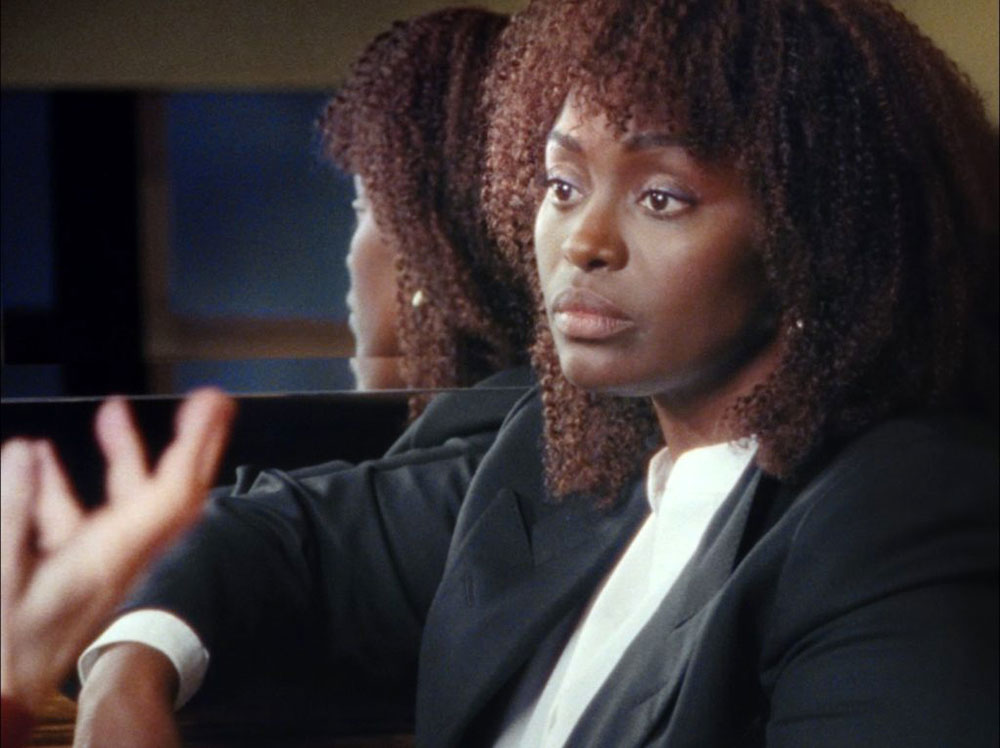In the first shot of Shulie (1997), Elisabeth Subrin’s provocative remake of a long-forgotten 1967 documentary portrait of the future feminist activist Shulamith Firestone, we see a depopulated Chicago cityscape. In the foreground is a building identified by a large sign: New Packing Co. Hints of sexual innuendo aside, the sign points to the unique approach that Subrin brings to her revelatory short works in both Shulie and Maria Schneider, 1983 (2022). She starts with existing footage, from decades earlier, of women who talk candidly about the challenges of defining themselves in a patriarchal and patronizing society. Then, Subrin painstakingly re-films the original documentary footage with actors, shot-for-shot, re-packaging historical artifacts as present-day fictions. Her films erase the distance between past and present, and, most importantly, the perceived spontaneity of the original footage is imbued with new layers of intentionality and performance.
The original Shulie, which can be seen here, is a standard cinéma vérité portrait of Firestone, a 22-year old Chicago Art Institute student and part-time post office worker who went on to write the influential 1970 book The Dialectic of Sex: The Case for Feminist Revolution. In the film, the protests that erupted at the Democratic Convention are still a year away and Shulie is bored by Chicago. Her day job is tedious and she is demeaned at art school by the condescending critiques of her painting that she receives from an all-male group of teachers. As she talks about her life, she is both restless and aimless. Subrin’s film has a framing device that lets the viewer know that Shulie eventually moved to New York and became a renowned feminist thinker. While Subrin shows Shulie’s protagonist in her formative intellectual years, Maria Schneider, 1983 shows us a movie star taking a retrospective, and understandably jaded, look back at her career. Subrin restages a seven-minute television interview with the French actress who was most remembered, to her eternal dismay, for a notorious sex scene in Last Tango in Paris (1973) that she later described as a psychological form of rape. Schneider’s disenchantment simmers under the surface of the interview until her anger erupts when pressed to talk about the Bertolucci film. (She says she’d rather discuss Michelangelo Antonioni’s The Passenger, 1975, the film of hers that she is most proud of.)
Both of Subrin’s films are impressive conceptual and technical accomplishments (especially Shulie, filmed on the same locations as the original film, mimicking its style while allowing for a few purposefully dissonant anachronisms). The key to the power of these works lies in their play with performance. As Shulie, the actress Kim Soss is able to channel the young woman in the 1967 film while also bringing a hint of self-conscious presentation fitting for a period that was seeing the emergence of reality television (specifically, MTV’s The Real World, 1992). And, Maria Schneider, 1983 actually remakes the original interview three times. Once, with the Lebanese-French actress Manal Issa, who looks almost identical to Schneider, a second time with the Senegal-born French actress Aïssa Maïga, and lastly with the Filipino-American actress and filmmaker Isabel Sandoval. The casting, inviting us to examine notions of race and gender while processing Schneider’s feelings about her objectification, makes the 1983 interview feel especially timely. Schneider, after all, became a retroactive icon of the #MeToo Movement.
Subrin’s films are compact but multilayered and ask the viewer to examine their subjects closely. With the perspective that the passage of time allows, they generate fascinating questions about just how much has changed since their original counterparts were made. To borrow a quote from the beginning of Shulie: “No matter how many levels of consciousness one reaches, the problem always goes deeper.”
Maria Schneider, 1983 + Shulie screen this evening, July 30, and on August 4, at Anthology Film Archives as part of the series “Verbatim.” Elisabeth Subrin will be in attendance for a Q&A.
gd2md-html: xyzzy Tue Jul 30 2024



